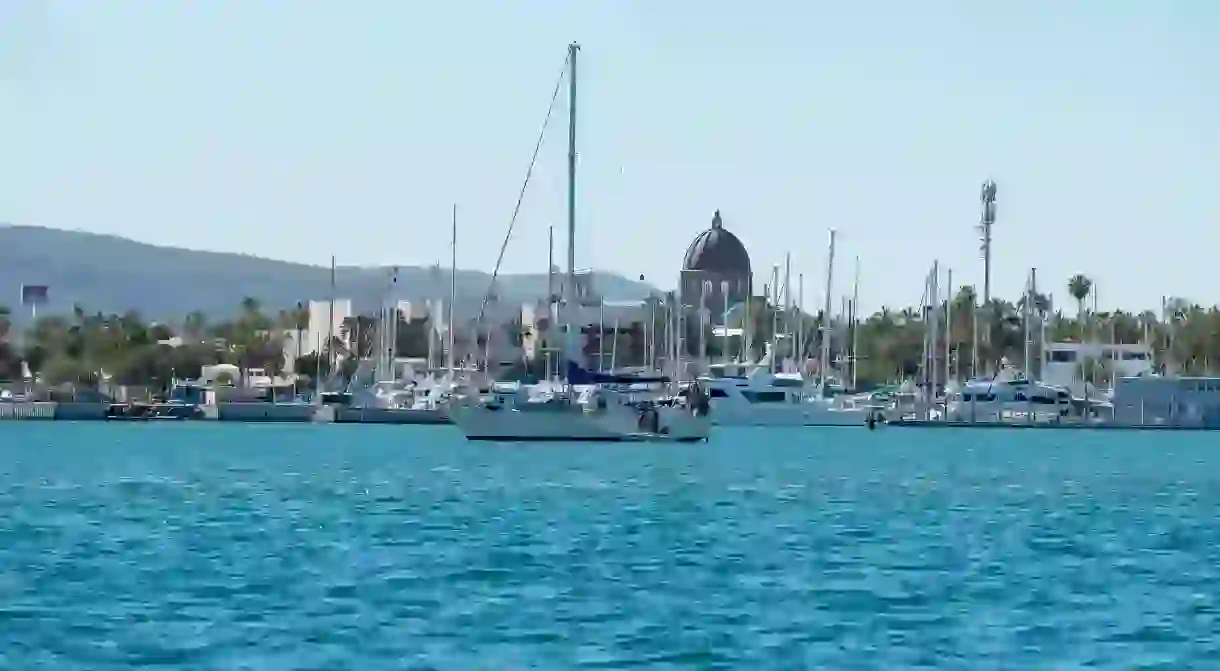Fascinating Facts About the History of La Paz, Mexico

From its mighty pre-colonial empires to the Spanish invasion and beyond, Mexico is a nation forged from conflict and conquest. And the turbulent history of how La Paz – the state capital of Baja California Sur – came into being is no different. This vibrant port took many centuries to tame, leaving a fascinating story littered with pearls and pirates, conquistadors and crooners in its wake. We’ve picked out some of the city’s best historic highlights to give you a bit of insight before you visit.
Dip into La Paz and explore its fascinating history at your own pace.
The region has been inhabited since prehistoric times
Archaeological treasures from as far back as 11,000 BCE have been found around the area where La Paz stands today. Some visible traces take the form of wonderful cave paintings near the city and dotted throughout the surrounding countryside. As well as native animals, human figures with arrowheads and primitive swords appear in the paintings supporting the idea that La Paz’s original inhabitants were nomadic hunters and gatherers.

It was discovered after a bloody mutiny
Basque-born Fortún Ximénez was the first European known to have landed in Baja California. He was the navigator and second in command of one of two vessels sent by Hernán Cortés to explore the region. Ximénez led a mutiny en route, killing the captain, abandoning the wounded along (which included some Franciscan friars), and taking command.
La Paz was once rich in pearls
The first Spaniards to arrive in La Paz were welcomed by the Guaycura, a peaceful fishing community that occupied the coastal lands. The Spanish soon noticed the large pearls worn by the natives, which they’d extracted from the abundance of local oysters, and proceeded to ransack the villages. While the Guaycura fought back and expelled the invaders, years later the Spanish recaptured the region and intensively exploited the natural pearl production until practically destroying the oyster population.
It wasn’t originally called La Paz
Fourteen years after defeating the Aztecs, Spanish conquistador Hernán Cortés sailed into La Paz bay in 1535. Despite christening the place Santa Cruz, his attempts to found a colony was abandoned after two years. His defeat was partly due to the fact he was overwhelmed by the hostile natives who had not forgotten the invaders’ previous behavior. It was decades later, in 1596, that Admiral Sebastian Vizcaino returned to establish a settlement, which he named La Paz.

It area took a while to subdue
Harsh conditions, hostile natives, and regular pirate raids made the area particularly tricky to permanently colonize. Dutch pirates even took control at the start of the 17th century, but Spain had wrestled it back by 1683. Despite new ownership, attempts to secure a permanent settlement failed. There were several more attempts at founding a functioning colony, including a push by Jesuit missionaries but those efforts lasted barely a month. A permanent colony in the region would not be fully established until 1811.
La Paz wasn’t always the state capital
Loreto, the oldest continuous settlement in the region, once served as the state capital of Las Californias. However, its rule came to an end in 1829, when it was all but destroyed by a fierce hurricane and flooding. The following year La Paz took its place as the capital. In 1930 Baja California was split into north and south territories, but the state of Baja California Sur was only established in 1974 – with La Paz as its capital.
La Paz briefly became part of a separate republic
In the aftermath of the Mexican-American War, Alta California was incorporated into US territory, while Baja California remained under Mexican control. That was until 1853 when American mercenary and freebooter William Walker invaded and captured La Paz – with a force of just 45 men. Walker immediately declared himself president of the Republic of Sonora and even put the region under Louisiana law to make slavery legal. It was only a matter of months until the Mexican government forced his retreat.

It was once a magnet for old-school A-listers
Around the same time, Acapulco was making a name for itself among the international glitterati, La Paz started to attract some serious celebrities of its own. The mid-20th century saw various American actors, writers, and adventurers discovering the region, including John Steinbeck who went on to describe the town in his novella The Pearl. Clark Gable and Jacques Cousteau were regular visitors, and by the Sixties, the likes of crooners Bing Crosby and Engelbert Humperdinck had bought homes in the city.
Explore La Paz and the surrounding coastline by booking a sailing vacation.
Did you know – Culture Trip now does bookable, small-group trips? Pick from authentic, immersive Epic Trips, compact and action-packed Mini Trips and sparkling, expansive Sailing Trips.













